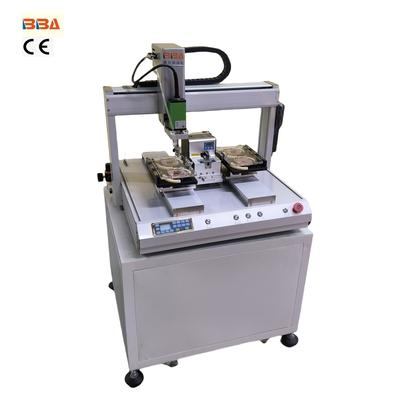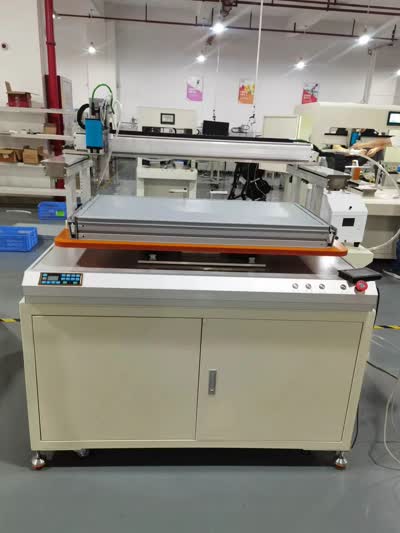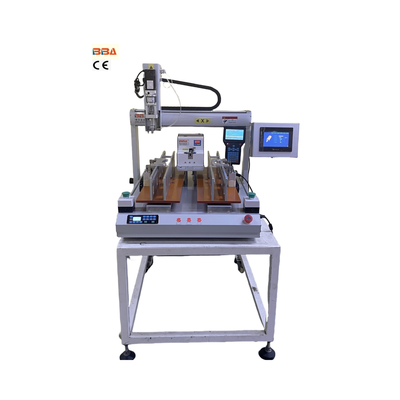Reducing Downtime with Multi-Axis Automation | Industrial Automation Solutions

| Product Name | Applicable industries |
| Smart Screw Driving Machine | Smartphone Manufacturing |
Reducing Downtime with Multi-Axis Automation
In today’s highly competitive manufacturing landscape, minimizing downtime is not just a goal—it’s a necessity. Unplanned stoppages can disrupt production schedules, lead to missed deadlines, and significantly impact profitability. One of the most effective strategies for enhancing operational continuity is the adoption of multi-axis automation systems. These advanced solutions are transforming how industries approach production, offering unparalleled precision, flexibility, and reliability.
Multi-axis automation refers to systems that control movement along multiple axes simultaneously. Unlike traditional single-axis or limited-motion machines, these sophisticated solutions can perform complex tasks with high accuracy and speed. By integrating robotics, motion controllers, and intelligent software, multi-axis systems enable manufacturers to execute intricate operations—such as cutting, welding, assembly, and material handling—with minimal human intervention. This capability is crucial for reducing cycle times and eliminating errors that often lead to equipment failure and production halts.
A key advantage of multi-axis automation is its ability to streamline processes that would otherwise require multiple machines or manual labor. For example, a single multi-axis robot can handle several stages of a production line, from picking and placing components to performing quality inspections. This consolidation reduces the number of potential failure points and simplifies the overall system architecture. With fewer machines involved, the risk of mechanical issues decreases, and maintenance becomes more straightforward. Moreover, these systems are designed with robust diagnostics and self-monitoring features, allowing them to detect anomalies early and alert operators before a minor issue escalates into a major problem.
Another significant benefit is the enhancement of predictive maintenance. Modern multi-axis automation systems are equipped with sensors that continuously collect data on performance metrics such as temperature, vibration, and load. By analyzing this data, manufacturers can predict when components might fail and schedule maintenance during planned downtime. This proactive approach prevents unexpected breakdowns and extends the lifespan of equipment. For instance, if a motor shows signs of wear, the system can flag it for replacement before it causes a production stoppage. This level of intelligence is instrumental in achieving near-zero unplanned downtime.
Flexibility is also a critical factor. Multi-axis systems are highly adaptable and can be reprogrammed quickly to accommodate new products or changes in design. This agility reduces the time and cost associated with retooling or reconfiguring production lines. In industries where product lifecycles are short and customization is high, such as electronics or automotive, this flexibility ensures that manufacturing can continue seamlessly without prolonged interruptions. The ability to switch between tasks with minimal downtime allows companies to respond rapidly to market demands and maintain a competitive edge.
Furthermore, multi-axis automation improves overall equipment effectiveness (OEE) by maximizing availability, performance, and quality. These systems operate consistently at high speeds with minimal errors, leading to higher output and better resource utilization. By reducing downtime and enhancing efficiency, manufacturers can achieve significant cost savings and improve their return on investment. The initial investment in multi-axis technology is often quickly offset by the reduction in lost production time and lower maintenance costs.
In conclusion, multi-axis automation is a powerful tool for reducing downtime in industrial settings. Its ability to perform complex tasks reliably, predict maintenance needs, and adapt to changing requirements makes it an indispensable asset for modern manufacturing. As industries continue to evolve toward smarter and more connected operations, embracing multi-axis solutions will be key to sustaining productivity and growth. By investing in these advanced systems, companies can not only minimize disruptions but also build a more resilient and efficient production environment for the future.


